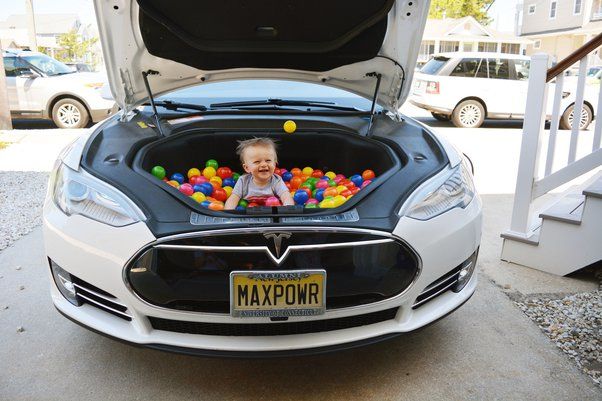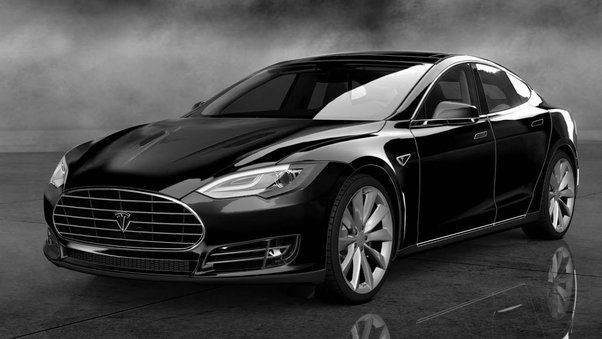


In the realm of sustainable transportation, Tesla has emerged as a pioneering force, revolutionizing the automotive industry with its cutting-edge electric vehicles. However, as these innovative cars gain widespread popularity, questions arise about their unique design and operation. One such query that frequently surfaces is: what happens if you accidentally put gasoline in a Tesla? This comprehensive guide delves into the intricacies of Tesla's all-electric architecture, the potential consequences of gasoline exposure, and the steps to take should such an incident occur. By understanding the underlying principles and following manufacturer guidelines, Tesla owners can ensure a safe and seamless driving experience while contributing to a more sustainable future.

Tesla vehicles are engineered to operate solely on electricity, a fundamental departure from traditional gasoline-powered automobiles. This innovative approach eliminates the need for an internal combustion engine, fuel tank, or any components designed to handle gasoline.
| Component | Gasoline-Powered Cars | Tesla Electric Vehicles |
|---|---|---|
| Engine | Internal Combustion | Electric Motors |
| Fuel | Gasoline | Electricity |
| Fuel Storage | Gasoline Tank | Battery Pack |
| Refueling | Gas Station | Plug-in Charging |
Unlike conventional cars, Tesla models do not have a gasoline engine or fuel tank. Instead, they rely on electric motors and a high-voltage battery pack to power the vehicle's propulsion system. This design choice is a direct result of Tesla's commitment to sustainable transportation and reducing emissions.
At the heart of every Tesla lies a sophisticated electric powertrain. Powerful electric motors, coupled with a lithium-ion battery pack, provide the energy necessary for propulsion. This battery pack is recharged by plugging the vehicle into an electrical outlet or dedicated charging station, eliminating the need for gasoline refueling.
Tesla's innovative charging system allows owners to conveniently recharge their vehicles at home, work, or public charging stations. By simply plugging in the charging cable, the battery pack is replenished with electrical energy, ensuring a seamless and emission-free driving experience.
Due to Tesla's all-electric design, introducing gasoline into the vehicle's systems is not only impossible but also potentially hazardous. This incompatibility stems from the fundamental differences between electric and gasoline-powered vehicles.
Incompatibility with Electrical Systems
Lack of Gasoline-Handling Components
Designed for Electricity Only
Tesla's electrical systems, including the high-voltage battery pack, motors, and associated components, are designed to operate exclusively on electricity. Gasoline, a hydrocarbon-based fuel, is incompatible with these systems and can cause severe damage if introduced.
Tesla vehicles do not have any components designed to handle gasoline, such as fuel lines, fuel injectors, or a gasoline tank. Attempting to introduce gasoline into a Tesla's systems would be akin to forcing an incompatible substance into a system not designed to accommodate it.
From the ground up, Tesla vehicles are engineered to harness the power of electricity. Every aspect of their design, from the propulsion system to the energy storage and management systems, is optimized for electric operation. Introducing gasoline into this meticulously designed ecosystem could disrupt its delicate balance and potentially cause irreparable harm.
While it is highly unlikely that gasoline could be accidentally introduced into a Tesla's systems, it is crucial to understand the potential consequences of such an event. Gasoline exposure can have severe ramifications for the vehicle's electrical components and overall functionality.
Gasoline is a highly corrosive substance that can wreak havoc on Tesla's electrical systems. If introduced, it could lead to corrosion, short-circuiting, and malfunctions within the vehicle's intricate electrical components.
| Consequence | Description |
|---|---|
| Corrosion | Gasoline's corrosive nature can cause extensive damage to delicate circuitry and connectors, leading to component failure and compromised performance. |
| Short-circuiting | Gasoline exposure increases the risk of short-circuits within high-voltage systems, causing sudden power surges and potential safety hazards. |
| Malfunctions | The introduction of gasoline can disrupt the electrical architecture, leading to reduced performance, erratic behavior, or complete system failures. |
The battery pack is a critical component in Tesla vehicles, responsible for storing and delivering the electrical energy that powers the motors. Gasoline exposure can have severe consequences for the battery pack's integrity and performance.
Reduced Range
Decreased Performance
Safety Hazards (Fire, Explosion)
Gasoline contamination can degrade the battery pack's capacity, resulting in a reduced driving range. This can significantly impact the vehicle's overall efficiency and convenience, particularly for long-distance travel.
Exposure to gasoline can also affect the battery pack's ability to deliver consistent power output. This can lead to decreased acceleration, reduced top speed, and an overall degradation in the vehicle's performance characteristics.
In extreme cases, gasoline exposure can potentially compromise the battery pack's safety systems, increasing the risk of thermal runaway, fire, or even explosion. These hazards not only endanger the vehicle but also pose a significant threat to the occupants and surrounding environment.

While the likelihood of accidentally introducing gasoline into a Tesla's systems is extremely low, it is essential to know the proper steps to take should such an incident occur. Prompt and appropriate action can mitigate potential damage and ensure the safety of the vehicle and its occupants.
Immediately Stop Attempting to Operate or Charge
Contact Tesla Customer Service or Certified Technicians
Follow Professional Guidance for Inspection and Repairs
If gasoline is accidentally introduced into a Tesla's systems, the first and most crucial step is to immediately stop any attempt to operate the vehicle or charge the battery. Continuing to operate or charge the vehicle after gasoline exposure can exacerbate the potential damage and increase the risk of safety hazards.
After securing the vehicle, it is imperative to contact Tesla's customer service or a certified Tesla technician as soon as possible. Explain the situation in detail and follow their guidance. Tesla's professionals are equipped with the knowledge and expertise to assess the extent of the damage and provide appropriate recommendations.
Tesla's customer service or certified technicians may recommend having the vehicle towed to a service center for a thorough inspection and any necessary repairs. It is crucial to follow their guidance and avoid attempting any repairs or modifications without professional oversight, as this could further compromise the vehicle's systems and void the warranty.
To ensure the proper operation and longevity of Tesla vehicles, it is essential to follow the manufacturer's guidelines and recommendations. Adhering to these guidelines not only helps prevent potential issues but also maintains the vehicle's warranty coverage.
Proper Maintenance and Operation
Warranty Implications
Ensuring Safety and Longevity
Tesla provides comprehensive owner's manuals and resources that outline the recommended maintenance schedules, operating procedures, and best practices for their vehicles. Following these guidelines ensures that the vehicle is maintained in optimal condition and operates as intended by the manufacturer.
Attempting to introduce gasoline or any other improper fluids or substances into a Tesla's systems can potentially void the vehicle's warranty. Manufacturers typically require adherence to their guidelines to maintain warranty coverage, protecting owners from costly repairs or replacements resulting from improper use or maintenance.
By following Tesla's manufacturer guidelines, owners can ensure the safety and longevity of their vehicles. These guidelines are designed to mitigate potential risks, optimize performance, and extend the lifespan of critical components, such as the battery pack and electrical systems.
Beyond the technical aspects of Tesla's all-electric design, owning and operating one of these vehicles offers numerous benefits that contribute to a more sustainable and environmentally friendly driving experience.
| Benefit | Description |
|---|---|
| Zero Direct Emissions | Tesla's electric motors produce no tailpipe emissions, contributing to cleaner air and a reduced carbon footprint. |
| Energy Efficiency | Tesla's electric powertrain is highly efficient, converting a significant portion of stored electrical energy into usable power for propulsion, resulting in lower operating costs. |
| Sustainable Transportation | Embracing Tesla's innovative electric vehicles actively participates in the transition towards sustainable transportation, reducing environmental impact and paving the way for advanced electric vehicle technologies. |
One of the most significant advantages of Tesla vehicles is their zero direct emissions. Unlike gasoline-powered cars, which release harmful pollutants into the atmosphere, Tesla's electric motors produce no tailpipe emissions, contributing to cleaner air and a reduced carbon footprint.
Tesla's electric powertrain is highly efficient, converting a significant portion of the stored electrical energy into usable power for propulsion. This efficiency translates into lower operating costs and reduced reliance on non-renewable energy sources.
By embracing Tesla's innovative electric vehicles, owners are actively participating in the transition towards sustainable transportation. This shift not only reduces environmental impact but also paves the way for the development of more advanced and efficient electric vehicle technologies.
In the ever-evolving landscape of automotive technology, Tesla stands as a beacon of innovation, pioneering the widespread adoption of electric vehicles. While the prospect of accidentally introducing gasoline into a Tesla may seem unlikely, understanding the potential consequences and taking appropriate preventive measures is crucial. By adhering to the manufacturer's guidelines, seeking professional assistance when necessary, and embracing the sustainable driving experience offered by Tesla, owners can enjoy the benefits of this cutting-edge technology while contributing to a greener future for generations to come.
The article clearly states that Tesla vehicles are fully electric and do not have any components designed to handle gasoline. Putting gas in a Tesla would be extremely damaging and should be avoided at all costs.
Yes, the article mentions that Tesla vehicles are equipped with systems to warm the battery in cool temperatures to ensure proper operation.
The article does not provide specific details on battery replacement intervals. However, it does state that Tesla batteries are designed for longevity and durability.
The article does not cover this scenario in detail. However, it emphasizes the importance of monitoring the battery level and charging regularly to avoid running out of power.
The article does not mention jump-starting procedures, likely because Tesla batteries are designed to be maintenance-free and not user-serviceable.
The article recommends rotating tires every 6,250 miles or when tread depth difference between tires is significant.
The article does not specifically address the fire safety of Tesla batteries. However, it does mention that Tesla designs incorporate safety features.
The article does not provide specific charging times, as this can vary based on factors like battery capacity and charging station capabilities.
The article does not explicitly cover this, but it implies that Tesla vehicles can be charged using various power sources, including household outlets with the appropriate adapter.
The article does not provide specific details on the expected lifespan of Tesla batteries. However, it does mention that Tesla batteries are designed for longevity and durability.

Sarah isn't your average gearhead. With a double major in Mechanical Engineering and Automotive Technology, she dived straight into the world of car repair. After 15 years of turning wrenches at dealerships and independent shops, Sarah joined MICDOT to share her expertise and passion for making cars run like new. Her in-depth knowledge and knack for explaining complex issues in simple terms make her a valuable asset to our team.












